HWA's New $770,000 Carbon-Bodied Mercedes 190E Gives the Icon New Life
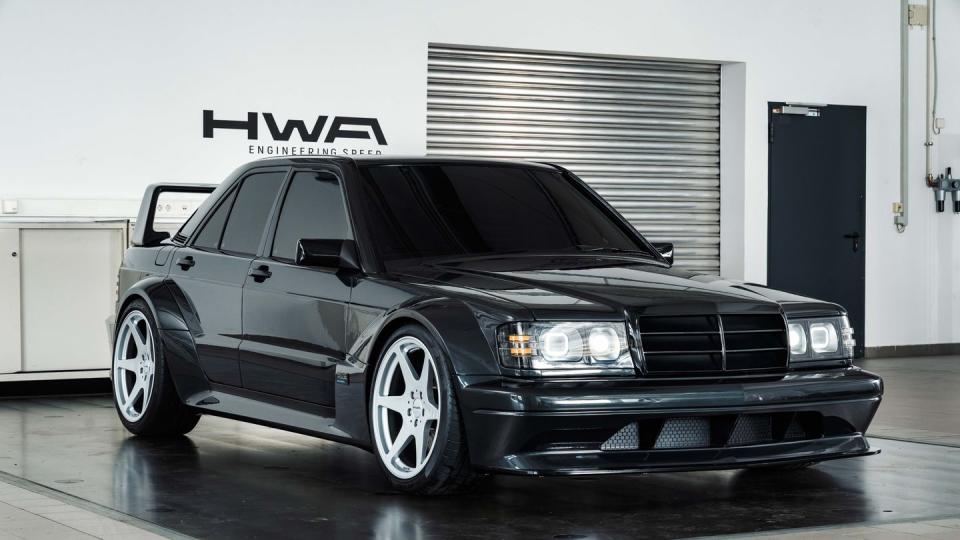
Mercedes’s acquisition of AMG in 1998 led to the creation of another three-letter tuning house. Hans Werner Aufrecht, the A in AMG, set up a new eponymous company to continue with the motorsport activities that Mercedes hadn’t wanted to acquire, many of these involving building and running cars on behalf of the larger company. HWA subsequently moved into road cars, building limited-run models including the CLK DTM for Mercedes, and engineering the forthcoming Detomaso P72 hypercar. But now, it is also set to launch the first street car under its own branding, an elegant evocation of the famous 190E 2.5-16 Evo II which, in race guise, dominated the DTM sedan championship in the early ‘nineties under the guidance of pre-merger AMG.
Earlier this week I visited HWA’s headquarters in Affalterbach, just over the road from AMG’s, for an exclusive preview. The first part of which was a lesson in what the new car is not. “Please, don’t call it a restomod,” asked HWA CEO Martin Marx, who gave Road & Track an early look at the ‘concept demonstrator’ the company has just finished. “This is not an old car we have modified, it is essentially an all-new car,” Marx adds, “I promise you that we have treated this project as seriously as everything else we do here.”
Given that HWA builds 120 race cars a year, plus many more race engines, and has literally dozens of trophies dotted around its Affalterbach factory for winning numerous races, that’s a serious commitment.
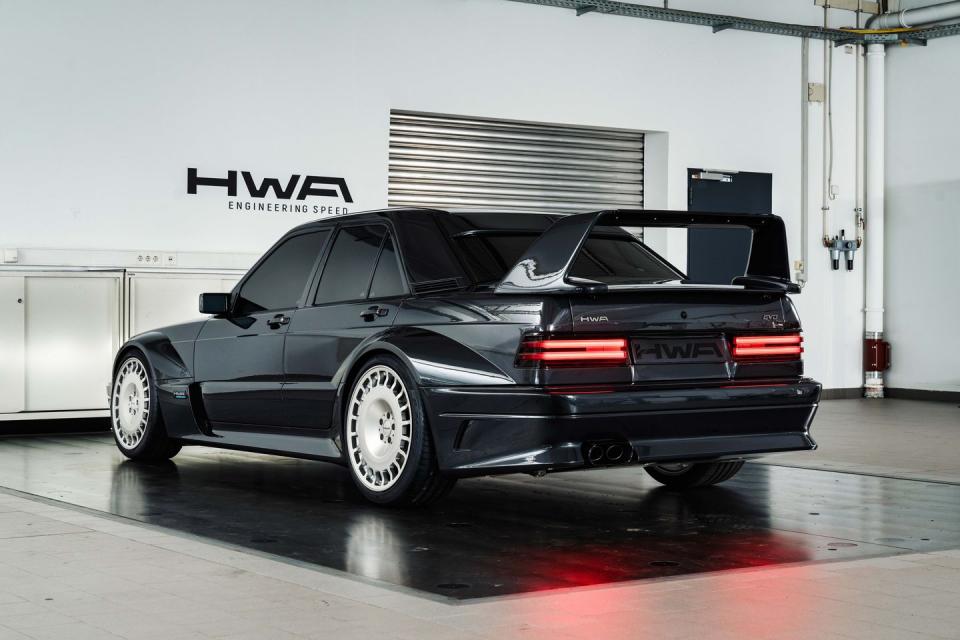
Which is exactly what buyers of the HWA Evo will also be making. Pricing has been set, with characteristic German precision, at €714,000. That’s just under $770,000 at current exchange rates. Only 502 of the original road-going Evo II were built to homologate aerodynamic changes on the race version, and it has long since become one of the most desirable modern Mercs for collectors. That was reflected last year when a low-mileage example sold for a dizzying $544,000 at auction in Las Vegas. Can this new version really be nearly 50 percent more special?
For all its familiarity of its looks, the chance to see the HWA Evo next to an immaculate Evo II quickly shows the scale of the differences between the two cars. The new one is both broader and longer than the original, a huge 12 inches wider, and with its wheelbase stretched by 3.1 inches, the front axle now sitting 1.9 inches further forward. While the OG car carries a body kit over production metal shared with the regular 190E of the period, the HWA Evo’s muscular lines are unbroken by gaps or joints. That’s because the bodywork is all new, and almost entirely carbon fiber. The only original metalwork visible from the outside of the car is the C-post behind the rear doors and a narrow strip at the side of the roof.
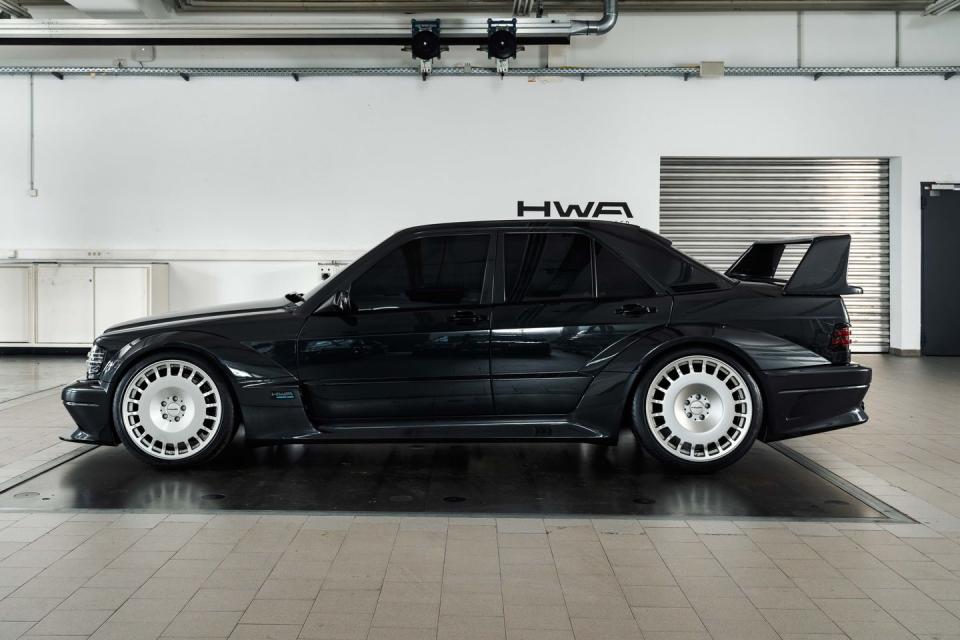
Underneath sits an original 190E shell, although one donated by one of the 1.7 million regular versions rather than an Evo. Little more than the passenger compartment is used, with new structures front and rear to locate all-new suspension and also to dramatically improve impact protection. The new front end, made from aluminum and high-strength steel, is closely related to the one used in the HWA-assembled AMG GT race car. The original bodywork is also given structural reinforcement to improve strength and stiffness, with the aim of—according to Chief Technology Officer Gordian Von Schöning—giving the advantage of a roll cage without having to fit one. The carbon fiber exterior panels that are bonded to the original shell improve rigidity further.
This is the point where Marx’s argument that HWA’s Evo is not a restomod starts to come true given the scale of the changes that have been made. Suspension is now by double wishbones at each corner, replacing the original front struts and multi-link rear axle. The gearbox has also been moved, with the production version of the HWA Evo set to have a rear-mounted six-speed manual transaxle to help redistribute weight and give an optimal 50:50 static weight distribution. Braking will be done with 14.9-inch Brembo discs gripped by six-pot calipers at the front, and 14.1-inch discs with four-pot calipers at the rear—sizes that wouldn’t have fitted inside the 17-inch wheels of the original car. HWA’s has 19-inch wheels at the front and 20-inch at the rear. Carbon-ceramic brakes and adaptive dampers will also come with the optional Affalterbach Pack. Steering uses a hydraulically assisted rack in place of the original 190E’s recirculating ball system.
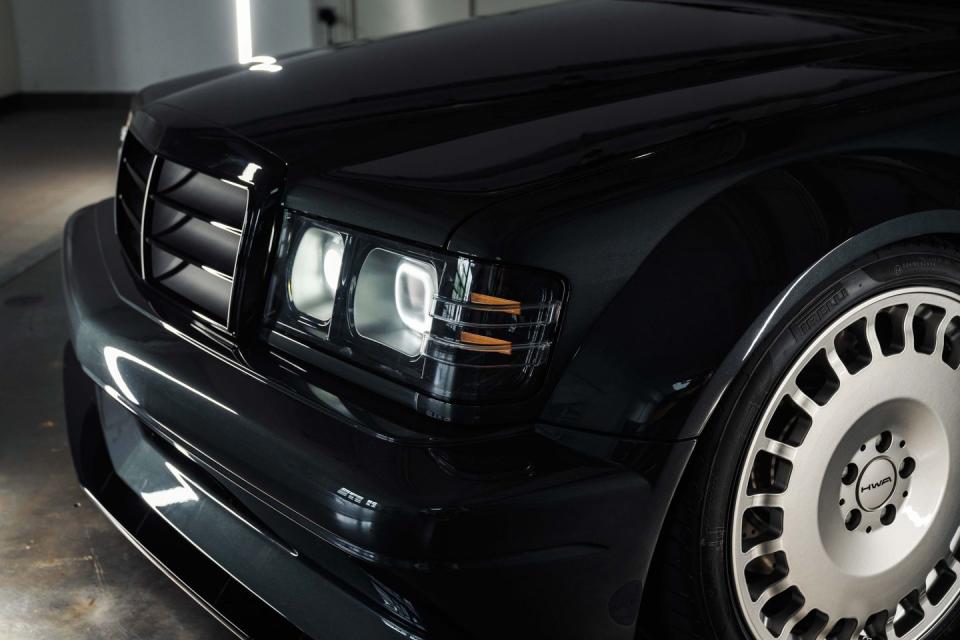
HWA’s choice of engine is where things turn really anachronistic. The 190E Evo II used a Cosworth-developed 16-valve 2.5-liter four-cylinder which made its peak 232 hp through revs, its redline set at 7700 rpm. Requiring substantially more power, and needing to pass emissions standards in some markets where the car can be sold as new, HWA has switched to a modern turbocharged engine. But not the AMG 2.0-liter four from the CLA 45 S which might be regarded as a modern alternative, but instead the ‘M276’ 3.0-litre twin-turbo V-6 from the previous generation E43 AMG. An ahistorical choice given that Mercedes wouldn’t fit its first V-6 into a passenger car until three years after the 190E left the market.
Von Schöning insists the engine’s tuning potential made it the obvious choice.
“We had performance targets that meant we could not use another four-cylinder, and the V-6 is short enough to mean we have this in a front-mid configuration ahead of the axle,” he says. “The 60-degree angle means it is also low, which benefits the center of gravity. Of course we thought about using a V-8, but that would have been really heavy on the front axle—we would have maybe had the same power but with more weight.”
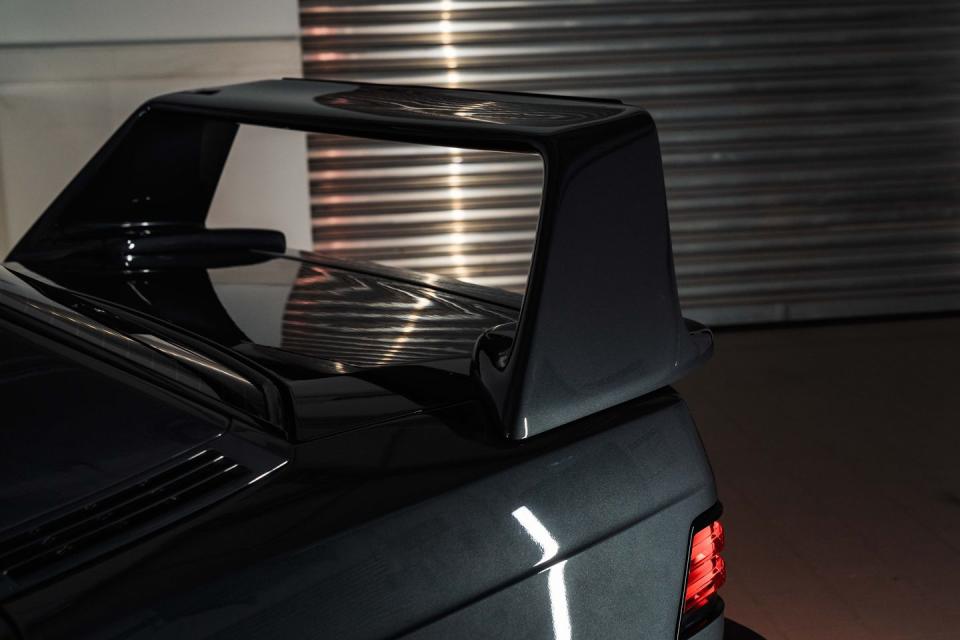
The V-6’s ability to handle extra power was the largest part of its appeal. HWA buys brand-new engines from AMG and then disassembles them to balance individual components. Pistons and rods are unchanged, but a dry sump is added along with a new induction system and HWA’s own ECU to allow for a substantial increase in power. The official claim is for 443 hp in standard guise, and 493 hp with the Affalterbach pack.
“But I will be honest, those numbers are very conservative,” Von Schöning says.
Maximum speed will depend on which final drive a buyer chooses, either 168 mph with better acceleration, or 186mph with the taller gearing. The modern ECU will also allow the new car to run both stability control and traction control.
The new bodywork has been designed by Edgar Chu, a German-based Australian who previously worked for both Mercedes and Nissan, and who has been responsible for the styling of numerous HWA-built race cars. Keeping the character of the original Evo II while accommodating the substantially stretched dimensions was a challenge, although one he has managed to do without making the car look cartoonish. Equally important were the cooling and aerodynamic requirements of what will be a much more powerful car, the new Evo’s design incorporating vents behind its wheel arches, and a new aerodynamic package that will give around 170 lbs of downforce to improve stability. Some of the details will be more divisive, especially the new clear-lens LED front headlights, the show concept’s black radiator grille, and the lack of a three-pointed hood mascot. I will admit my own bias here, as a 190E 2.5-16 owner, I think the original Evo II’s front end is close to unimprovable.
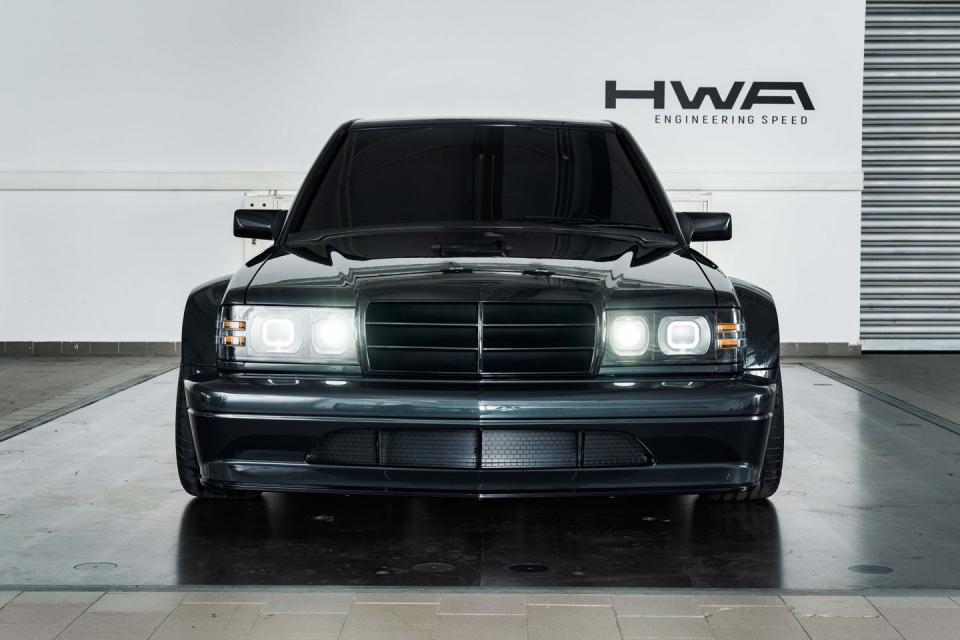
Marx admits that HWA’s first own-branded project was a risky decision, especially given the need to front a sizeable investment without knowing how the market would respond. But even before the first of the proposed run of 100 cars is delivered in 2026, it looks to have been a success—75 percent have apparently been sold. Similar projects will follow, with the next likely to be a modern take on the famous W124 E-Class-based AMG ‘Hammer.’
You Might Also Like

 Yahoo Autos
Yahoo Autos 